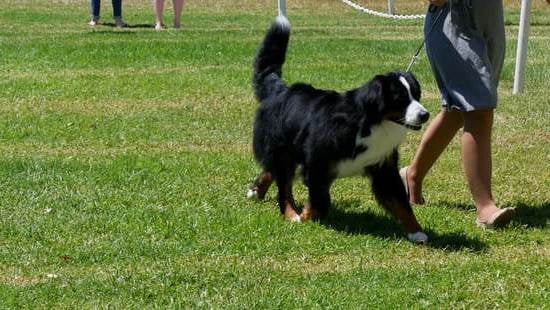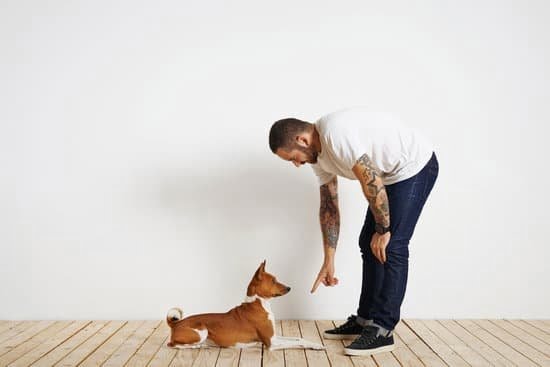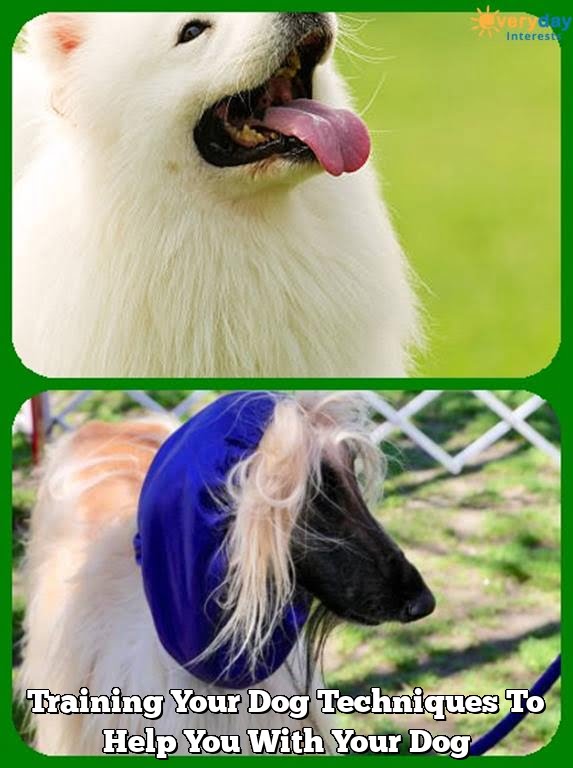Introduction to Comfort Dogs & Understanding the Benefits to Training
Comfort dogs, sometimes referred to as therapy or service dogs, provide additional comfort, companionship and support to individuals in need. These furry friends are often seen accompanying people who are going through a difficult time; their presence alone can make all the difference. Research has found that comfort dogs can help reduce stress levels, reduce negative emotions and enhance general wellbeing. Additionally, many current studies confirm that petting and interacting with animals releases serotonin and endorphins making us happier, calmer and more content.
Training your dog to be a comfort dog requires patience and an understanding of the specific tasks they will be performing. Some of these tasks include: recognizing signs of anxiety or unfavorable conditions in an individual and responding by providing gentle affection; providing tactile stimulation such as pawing back a hand when it is petted; staying calm around distractions such as other animals or loud noises; helping stay focused on positive thought patterns; being easy to handle on streets or in public spaces during walks; mild obedience training for calming commands such as ‘stop’ or ‘wait’; demonstrating basic house manners such as not jumping up or licking at will; discovering potential triggers in the environment which would cause negative responses from the comfort dog. Ultimately, if trained correctly, the beauty about having a comfort dog is that you can benefit from them wherever you go.
Knowing Your Dog
When attempting to train a dog to be a comfort dog, it is important to understand and assess your dog’s personality and working ability. Start by getting to know your pup; take them for walks, introduce new experiences, monitor their body language and interactions with people, and pay attention to what they seem interested in. Analyze those interests and look for specific talents or idiosyncrasies that the dog exhibits. Furthermore, observe their preferred behaviors when faced with different stimuli like noise, movement or even food. Additionally, understanding the breed of your dog can give insight into common characteristics of that breed which you can use for training purposes. For instance, breeds who were historically bred to herd generally excel at agility activities while hunting breeds may be more proficient in situations requiring scent work or tracking abilities. Moreover, if you plan on pursuing objective therapy-related certifications such as Therapy Dog International (TDI), registering with an organization like TDI will guide you in providing all the necessary steps needed in order to adequately prepare your pup for all components of the exam. Ultimately assessing your pet’s individual traits plus analyzing their originating breed should equip both you and your dog with the necessary knowledge on where and how best to focus training time for optimal success.
Establishing the Proper Leadership & Ownership Role
When it comes to training your dog to be a comfort dog, it’s important that you establish the proper leadership and ownership role. This starts with recognizing that your dog is looking to you for guidance, direction and instruction. Provide consistency when it comes to rules: basic commands such as sit, stay, leave and come should always be reinforced with praise and treats in order for your pup to recognize them. When it comes time for socialization, allowing your pup to meet new people and dogs in public can help build their familiarity with different environments. Through utilizing positive reinforcement techniques such as rewards and praise, you can teach your pup appropriate manners in these settings and help him/her become comfortable interacting with strangers. Establishing the proper leadership role does not mean being domineering or aggressive – it simply requires consistency on your part so that your pup learns how to behave appropriately around humans and animals of all types. With patience and dedication from both their owners and trainers, comfort dogs can really make a difference in someone’s life!
Teaching the Basics
Before beginning the process of training your dog to be a comfort dog, it is important to establish fundamental commands and house rules. This is key for any dog but especially when trying to train them for a specific purpose. Commands such as ‘sit’, ‘stay’, and ‘come’ are very helpful in gaining your dog’s compliance as well as setting up basic expectations. It is also important to lay down some clear house rules – let your pup know which behaviors are allowed and which are not acceptable. Create a positive environment in the home by setting concise boundaries, enforcing those boundaries consistently, and offering plenty of praise for good behaviors.
Once you have taught your pet the basic commands, house rules, and good behaviors that will be expected while they are being trained as a comfort dog, it is time to move onto more specialized activities. Start by actively seeking out socialization opportunities with other pups so that your pet can get used to being around other animals in different environments. Similarly, try introducing them to different people – have guests come over or take walks around the neighborhood; the more they can practice interacting positively with humans, the more comfortable they will be in their role as a comfort dog. Finally, look into agility classes or teaching tricks that focus on self-control – this helps them stay level-headed in stressful or anxious situations where their assistance may be required as a life-long comfort pup.
Introducing the Comfort Dog Role
A comfort dog is a canine companion trained to provide emotional support, relieve stress and anxiety, and provide comfort to those in need. The training of a comfort dog is an involved process that requires consistency, positive reinforcement, and patience from its human handler. To become a certified comfort dog, the pet must complete numerous tasks required by the academic and certification body standards as well as general obedience commands for basic manners and safety.
Before beginning a training program for a comfort dog role, it is important to understand the specific skillsets required. These include basic obedience commands such as sit, stay, come, leave it, heel; good manners such as not jumping on people or begging for food; plus essential skills such as recognizing signs of anxiety or distress in their handler. The pet should also be comfortable with being handled and examined by strangers as they may need to accompany their handler to medical appointments or other settings where contact with unfamiliar people will occur. Additionally, they must possess an appropriate temperament toward children while being able to ignore other animals when needed. Lastly, they should have fun doing tricks that can help ease anxiety during treatment sessions such as waving goodbye with their paw or playing hide-and-seek using treats placed around the room. These activities are effective ways to distract handlers from any discomfort associated with therapy or medical treatments their handler might be undergoing.
Socialization & Interaction With Dog & People
Socialization and interaction with dogs and people are important elements to consider when training a dog to be a comfort dog. Proper socialization will help your dog become accustomed to being around other dogs and people, increasing their levels of trust and patience. Additionally, strong socialization skills can help in preventing aggression, excessive barking, potty accidents inside the house, and other undesired behaviors.
The best way to socialize your dog is by gradually introducing them to as many new people as possible during their puppyhood. Starting with close family members or neighbors that your pup knows well can be helpful in building confidence before being exposed to more unfamiliar faces. It is also important for owners not to forget about positive reinforcement when introducing their pup to different kinds of environments. Inviting friends over or going on outings with your pup can ensure they stay comfortable while engaging with new people – treats can also be used during these introductions as an easy reward system whenever desired behavior has been showcased.
Another great step in the process of training a comfort dog is helping them practice interacting with people properly. This usually involves teaching basic commands like “sit” or “stay” so they know how to act when someone new approaches them on the street. These commands are excellent steps that every pet owner should take towards creating a safe and friendly environment between your pup and those around it – once proper obedience has been established, their socialization skills will naturally follow suit!
Exercise & Mental Stimulation
Before you can train your dog to be a comfort dog, regular exercise and mental stimulation are an essential part of the process. Exercise helps keep your dog in physical shape while also releasing calming hormones that help to reduce stress. Additionally, it has been proven that dogs with higher levels of mental stimulation tend to show fewer behavioral problems when compared to dogs that are not given physically enriching activities or puzzles.
In order for your pup to thrive in a comfort dog role, daily walks and playtime should become part of their routine. If possible, try to mix up their activities so as to avoid boredom; ask your veterinarian about agility courses, doggy boot camps, or flyball classes — this will provide great aerobic exercise as well as challenging mental stimulation. It is also important to make sure that his body language is being read properly by building a strong bond between the two of you via obedience classes and frequent practice sessions. This will build trust between the pair and prepare them for more advanced command training later on. Lastly, offer plenty opportunities for positive reinforcement and rewards when they display desired behaviors during training sessions. Doing so will create a positive learning environment and help prepare them for their upcoming comfort dog role!
Health & Hygiene
The first step in training your dog to be a comfort dog is to make sure they are in good physical health and well-being. This starts with providing them with a balanced diet, appropriate exercise, and regular veterinary checkups. Certain breeds may require more strenuous exercises than others, so it’s important to find out what type of activities would be suitable for your dog and adjust their routine accordingly. Additionally, you should ensure your pup is up-to-date on all necessary vaccinations, preventatives, and parasite control treatments.
To keep your dog comfortable and healthy, regular grooming is essential as it helps detect any signs of illness or other issues that may not be visible to the naked eye. You should also regularly inspect your pet’s ears and paws for any abnormalities or issues that could require treatment. Furthermore, you should practice proper dental hygiene by brushing their teeth at least twice a week or having them professionally cleaned by a vet if necessary. Finally, investing in quality toys and ensuring they have plenty of stimulation while exercising can help keep your pup looking, feeling and acting its best.
Finalizing the Comfort Dog Training
Once you’ve gone through the preliminary steps and have begun to train your dog, it is time to pursue certification. The certifying body of comfort dogs is usually a therapy animal organization. Depending on the organization and requirements, there will likely be an exam that you need to pass before your dog can be certified. This could include tasks such as executing commands in various environments, demonstrating their behavior in public settings, or interacting with individuals with special needs.
In addition to certification, establishing a system of consistent rewards is critical for maintaining your pup’s education progress. Positive reinforcement is key when it comes to comfort dog training because it provides physical and mental stimulation by reinforcing desired behaviors. Therefore, it is best to make sure that your reward system remains constant throughout the entire training period. Additionally, be sure to adjust your levels of reward depending on how well your dog performs certain tasks; adjust both positively (when doing something expected) and negatively (when exhibiting unwanted behavior). With this method, you can guarantee that your pup has an incentive for learning without feeling overwhelmed or stressed out during their comfort dog journey.
Conclusion
After a period of patience and devotion, you have successfully trained your dog to be a comfort dog. Rejoice in the knowledge that your beloved pet can bring healing, support, and happiness to people in need. Witnessing firsthand the positive impact that your four-legged best friend has on others should make you proud of your commitment and hard work! Consider volunteering with a local animal shelter or organization and helping spread love, joy, and companionship. You may even find that helping others through the work of your pet is a very rewarding experience. By sharing the respectful bond between humans and animals with the world, you have done an amazing job.

Welcome to the blog! I am a professional dog trainer and have been working with dogs for many years. In this blog, I will be discussing various topics related to dog training, including tips, tricks, and advice. I hope you find this information helpful and informative. Thanks for reading!





